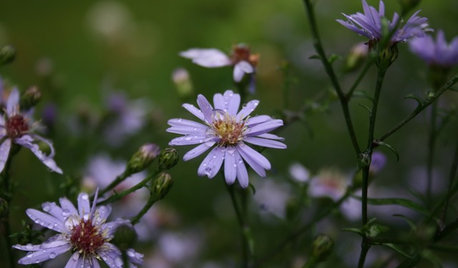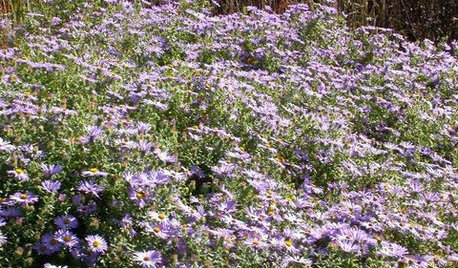Thinning, a tough problem to have
olympia_gardener
11 years ago
Related Stories

GARDENING GUIDES6 Native Ground Covers for Tough, Dry Spots
Sun beating down on your sandy gravel? Thick shade darkening your clay soil? There’s a ground cover here for you
Full Story
FLOWERS6 Overlooked Asters for Tough Spots
Whether your garden has baking sun or dry dense shade, boggy soil or sandy gravel, there's an aster for that
Full Story
REMODELING GUIDESThe Hidden Problems in Old Houses
Before snatching up an old home, get to know what you’re in for by understanding the potential horrors that lurk below the surface
Full Story
HOUSEKEEPING10 Problems Your House May Be Trying to Show You
Ignore some of these signs and you may end up with major issues. We tell you which are normal and which are cause for concern
Full Story
LANDSCAPE DESIGNProblem Solving With the Pros: How to Build a Garden in an Urban Canyon
Skyscrapers, noise and deep shade create an unlikely sweet spot for a timeless green retreat in New York City
Full Story
BOOKSCan Tidying Up Result in Life-Changing Magic?
Organizing phenom Marie Kondo promises big results — if you embrace enormous changes and tough choices
Full Story
GARDENING FOR BUTTERFLIESGreat Design Plant: Aromatic Aster Keeps on Blooming
Tough as nails, drought loving, a deep fall bloomer ... this aster is a champ in sunny gardens
Full Story
DECORATING GUIDESFrom Queasy Colors to Killer Tables: Your Worst Decorating Mistakes
Houzzers spill the beans about buying blunders, painting problems and DIY disasters
Full Story
MATERIALSDiscover the Bohemian Beauty of the Turkish Peshtemal
Lightweight and thin yet super absorbent, the traditional bathhouse towel finds uses throughout the house
Full Story
MOST POPULARHow to Finally Tackle Your Closet's Critical Mess
It can be tough to part with reminders of your past, but your closet needs space for who you are today
Full Story







fruitnut Z7 4500ft SW TX
alan haigh
Related Professionals
Lake Oswego Landscape Architects & Landscape Designers · Palm Springs Landscape Architects & Landscape Designers · Saint Louis Park Landscape Architects & Landscape Designers · Waunakee Landscape Architects & Landscape Designers · Anderson Landscape Contractors · Elgin Landscape Contractors · Dudley Landscape Contractors · Huntley Landscape Contractors · Lewisville Landscape Contractors · Pleasant Prairie Landscape Contractors · Sammamish Landscape Contractors · San Pedro Landscape Contractors · Wallingford Landscape Contractors · West Haverstraw Landscape Contractors · Casselberry Landscape Contractorsolympia_gardenerOriginal Author
fruitnut Z7 4500ft SW TX
mamuang_gw
alan haigh
olpea
blazeaglory
alan haigh
Dan.NY
planatus
capoman
olympia_gardenerOriginal Author
alan haigh
capoman
olympia_gardenerOriginal Author
alan haigh
oregonwoodsmoke
olpea
olympia_gardenerOriginal Author
ramble